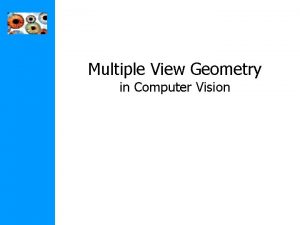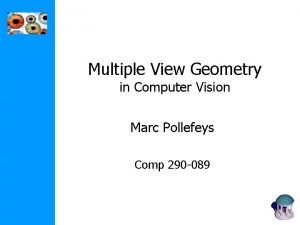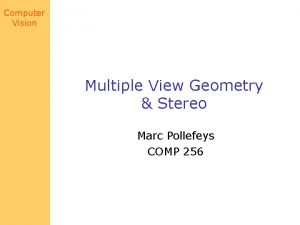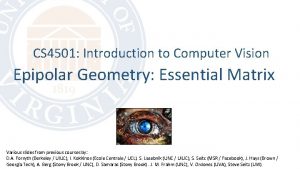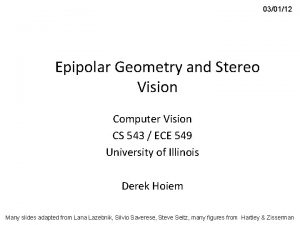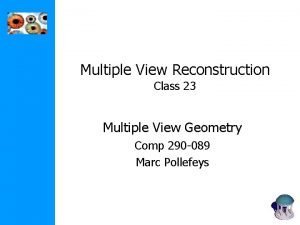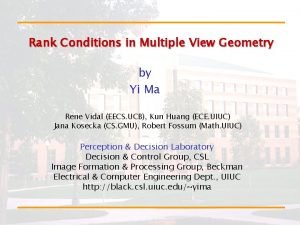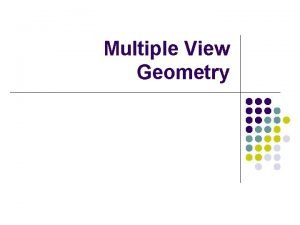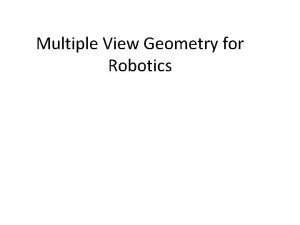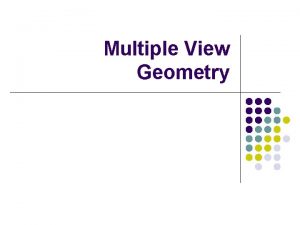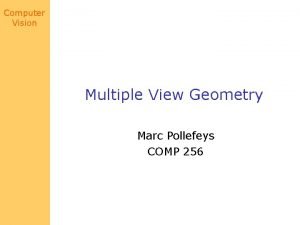Multiple View Geometry in Computer Vision Multiple View








- Slides: 8

Multiple View Geometry in Computer Vision

Multiple View Geometry A a a c b b c f(a, b, c)=0 (a, b) A reconstruct geometry of scene (a, b, c) calibrate cameras (a, b) c Transfer an image point from one camera to the other

Course objectives • To understand the geometric relations between multiple views of scenes. • To understand the general principles of parameter estimation. • To be able to compute scene and camera properties from real world images using state-of-the-art algorithms.

Applications • Match. Moving In cinematography, match moving is a visual-effects technique that allows the insertion of computer graphics into live-action footage with correct position, scale, orientation, and motion relative to the photographed objects in the shot. Compute camera motion from video (to register real and virtual object motion )

Applications • 3 D modeling

Content • Background: Projective geometry (2 D, 3 D), Parameter estimation, Algorithm evaluation. • Single View: Camera model, Calibration, Single View Geometry. • Two Views: Epipolar Geometry, 3 D reconstruction, Computing F, Computing structure, Plane and homographies. • Three Views: Trifocal Tensor, Computing T. • More Views: N-Linearities, Multiple view reconstruction, Bundle adjustment, autocalibration, Dynamic Sf. M, Cheirality, Duality

Administration • Office hours: Tuesdays 11 to 12 • Grades: • 10% class participation • 20% Matlab homeworks (pending on finding a grader) • 70% project • Proposals due 4 weeks into the semester • Mid term progress report 8 weeks into the semester • Final report and presentation: end of the semester

Relevant textbooks • Computer Vision: A modern approach by Forsyth and Ponce • Multiple view geometry in computer vision by Hartley and Zisserman • An invitation to 3 -D Vision; from images to Geometric models by Ma, Soatto, Kosecka and Sastry • The geometry of multiple images by Faugeras and Luong • Introductory techniques for 3 D computer vision by Trucco and Verri • Marc Polleyfeys tutorial on 3 D reconstruction • http: //www. cs. unc. edu/~marc/tutorial. pdf
